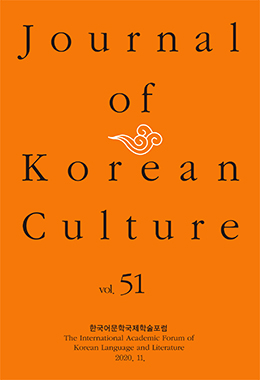본 논문은 알레고리적 미의식과 역사의식을 중심으로 김수영의 시를 살폈다. 폐허와 구원, 폐허의 인식을 통한 구원에 대한 희망이 알레고리로 해석할 수 있으리라 판단했기 때문이다. 본 논문에서 중요하게 참조한 것은 발터 벤야민의 알레고리론이다. 그는 조화와 균형을 중시하는 기존의 상징론에 반하여 순간성과 파편성을 중시하는 알레고리론을 주장한다. 폐허와 잔해로 가득한 인간 문명과 문화를 이해하는 데 더 적절한 것이 알레고리로 본 것이고 본 논문 또한 벤야민의 관점을 적극적으로 수용하여 김수영의 시를 읽는 데 중요한 관점으로 삼았다. 이에 따라 김수영의 시를 살핀 결과 다음과 같은 결론에 이르렀다.
김수영은 일제 강점과 해방과 전쟁과 독재와 쿠데타로 이어지는 한국현대사의 격변을 거치며 시인으로 등장하여 활동하였던 바 폐허와 잔해와 같은 것이 그의 시적 경험에서 중요한 것이었다. 이를 초기의 시에 해당하는 「웃음」과 「더러운 향로」에서 확인하였다. 특히 「더러운 향로」에서는 과거의 누추함과 낙후성을 받아들이는 과정이 폐허와 같은 전통을 적극적으로 받아들이는 것으로 나타났는데 이러한 과정이 벤야민적 관점에서 알레고리적 미의식과 유사하다 하겠다.
「헬리콥터」와 「네이팜탄」 같은 작품이 전쟁으로 폐허가 된 현실을 경험하면서도 절망과 좌절에 휩싸이지 않고 상상적으로 미래를 그리며 구원과 희망의 도래를 노래하는 작품이다. 이러한 작품들을 통해 김수영이 폐허와 절망의 심층을 적극적으로 돌파하고자 하였고 이를 통해 새로운 미래에 대한 가능성을 희망하였음을 파악할 수 있었다. 구원과 희망의 도래에 대한 의지는 「절망」이라는 시에서 좀 더 구체적으로 볼 수 있었는데, 기적과도 같은 구원과 희망의 도래는 반복적 구문으로부터의 탈피에서 오는 것을 확인할 수 있었다. 김수영은 현실에 투항하거나 절망하는 것이 아니라 그러한 절망에 끊임없이 저항하는 절망을 통해 새로운 미래에 투신할 수 있는 시적 용기를 얻을 수 있었다.
This paper examined the poems of Kim Soo - young focusing on the allegorical aesthetics and historical consciousness. It is because it is judged that the hope of salvation through the recognition of ruins, salvation, and ruins can be interpreted as allegory. An important reference in this paper is Walter Benjamin's Allegory. In contrast to the existing symbolism that emphasizes harmony and balance, he claims Allegiance which emphasizes instantness and fragmentation. It is seen as an allegory that is more appropriate to understand human civilization and culture filled with ruins and wreckage. This paper also actively accepted Benjamin 's point of view and made it an important point to read Kim' s poetry.
Kim Soo-young appeared as a poet through the ups and downs of Korea's modern history, leading to liberation, war, dictatorship, and coup, and such things as ruins and rubble were important in his poetic experience. This was confirmed in "Laughter(「웃음」)" and "Dirty censer(「더러운 향로」)" that corresponded to the initial poem. Especially in the "Dirty Censer", the process of accepting the oldness and dwindling of the past seems to actively accept traditions like ruins. This process is similar to the allegorical aesthetics from Benjamin point of view.
It is a work that sings the salvation and the arrival of hope by imagining the future without suffering from despair and frustration while experiencing the reality that the works such as "helicopter(「헬리콥터」)" and "napalm(「네이팜탄」)" are ruined by the war. Through these works Kim Soo - young was actively trying to break through the depths of despair, and it was understood that he hoped for a possibility for a new future. The will for salvation and hope of hope could be seen more specifically in the poem "despair(「절망」)," and miraculous salvation and hope could come from the departure from repetitive phrases. Kim was able to obtain poetic courage to be able to invest in a new future through despair that constantly resisted such despair, rather than attacking or despising reality.




